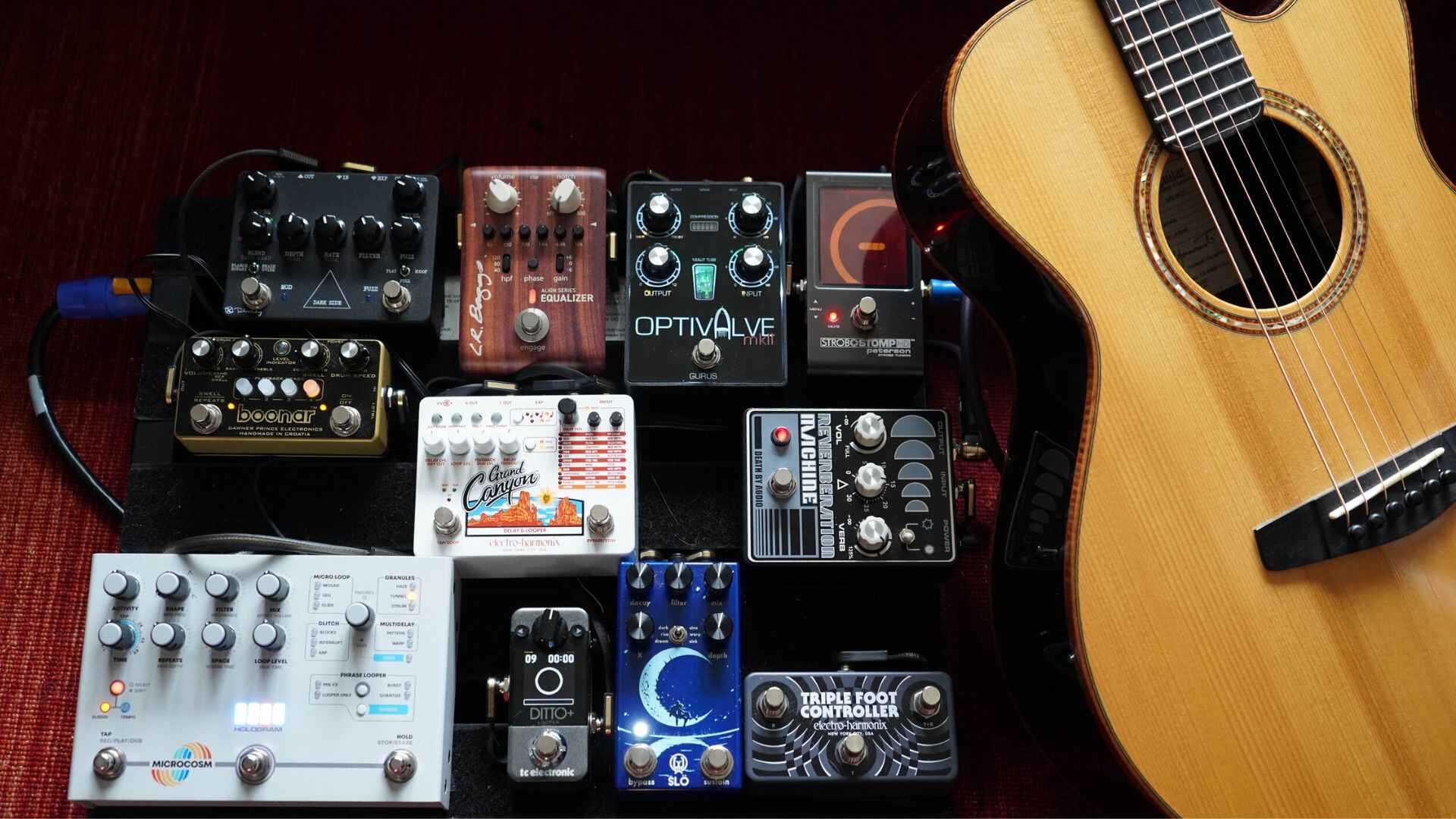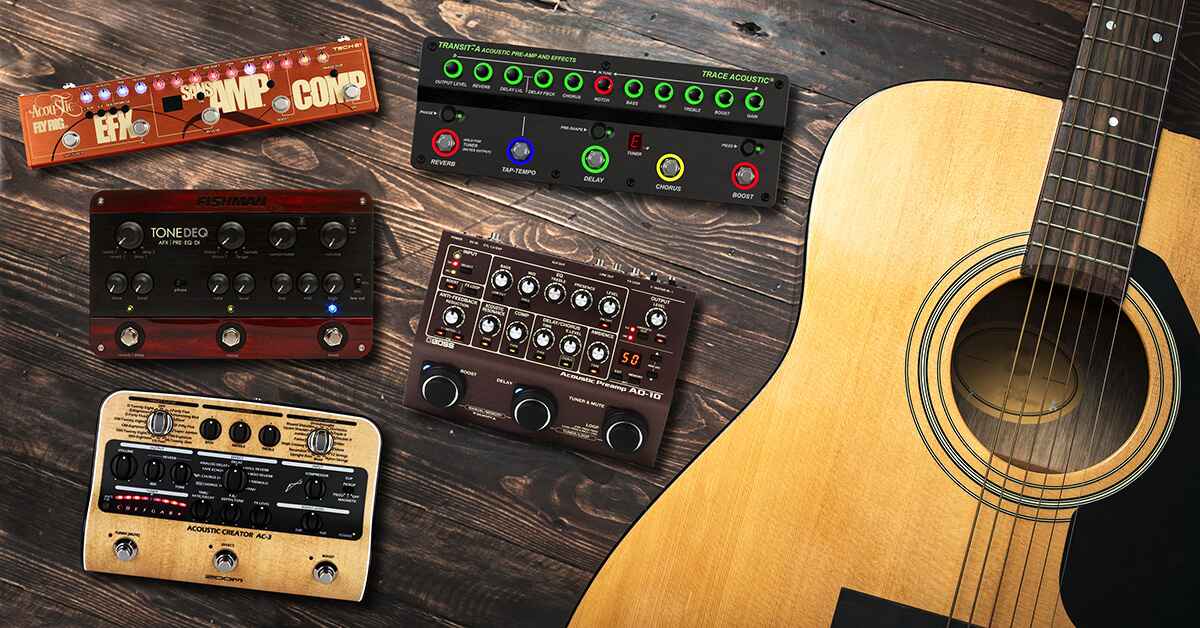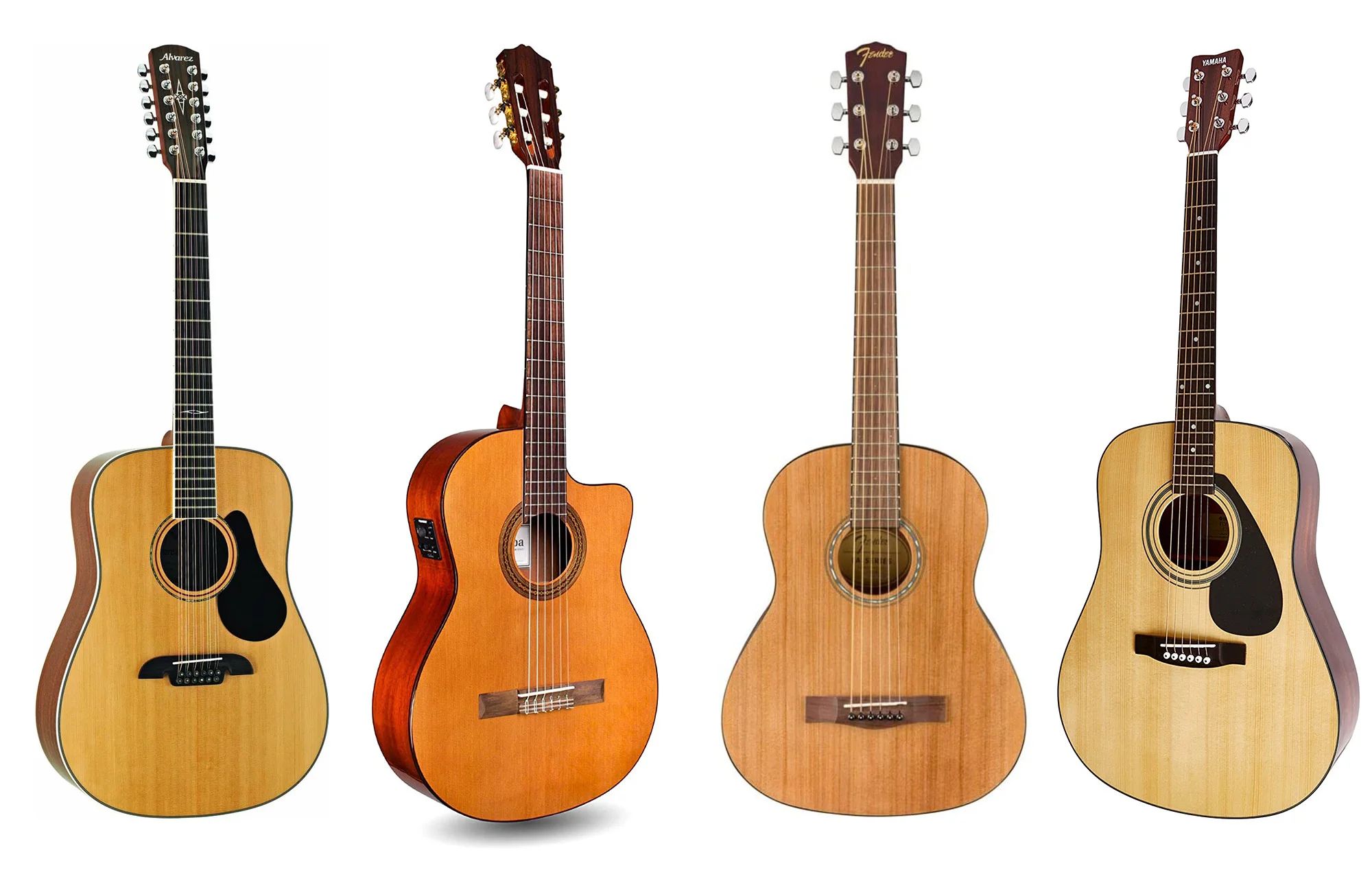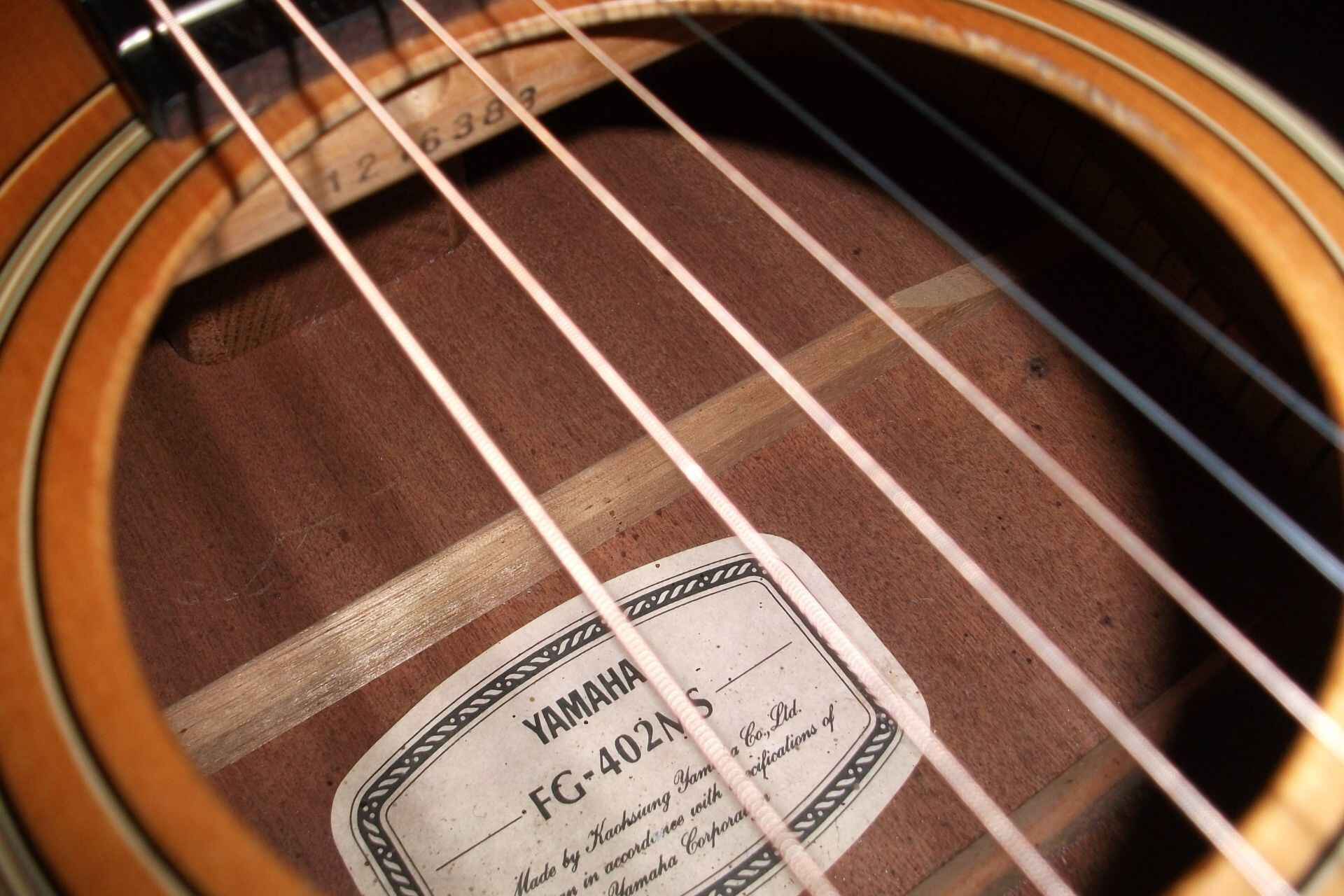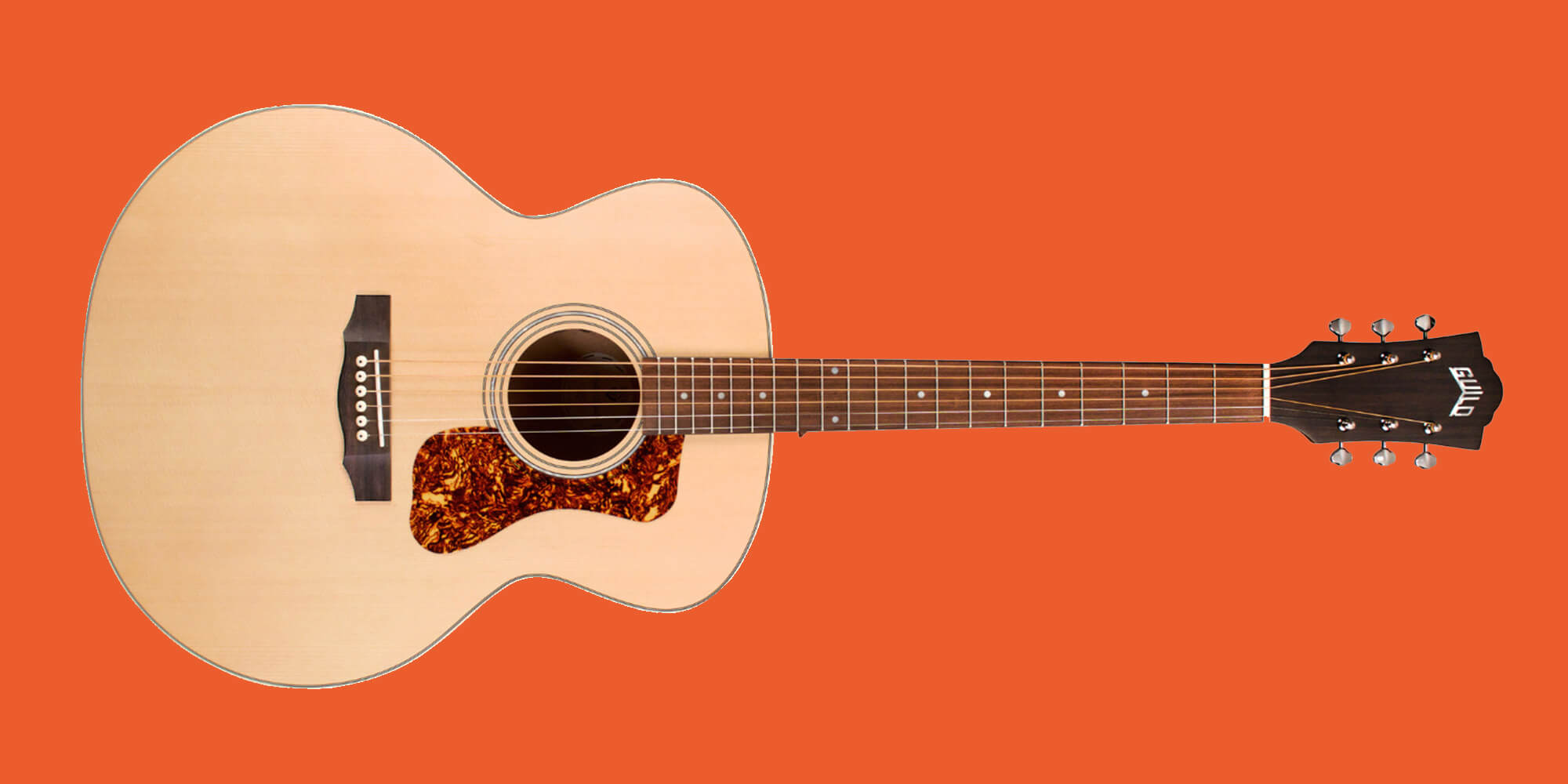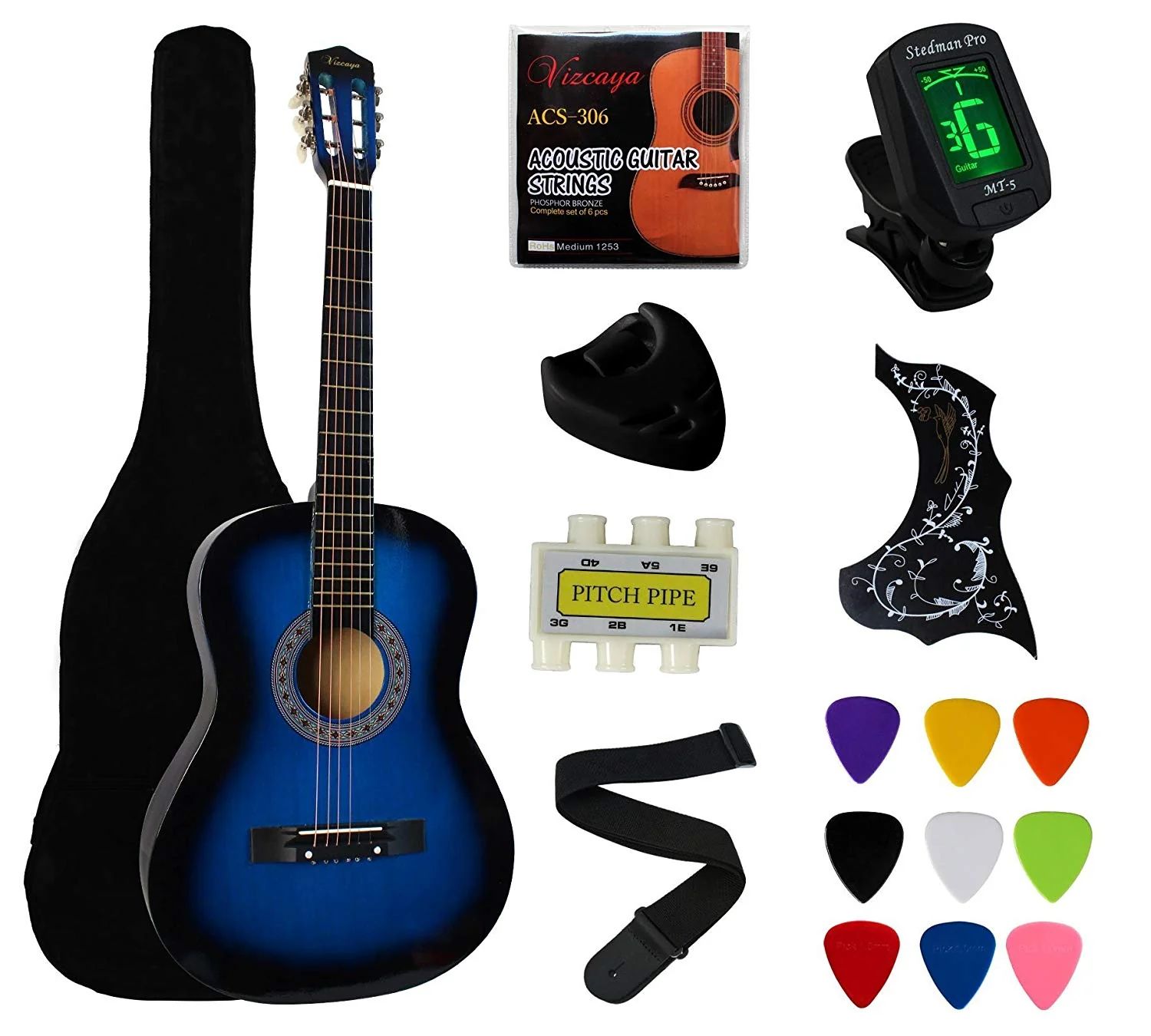Introduction
Welcome to the world of acoustic guitar compressors! Whether you’re a seasoned musician or just starting on your musical journey, understanding how to use an acoustic guitar compressor can greatly enhance your playing experience. In this article, we will delve into the basics of acoustic guitar compressors, why you should use them, how they work, and provide you with a step-by-step guide to get you started.
An acoustic guitar compressor is a valuable tool that helps even out the dynamic range of your guitar’s sound. It essentially acts as an automatic volume control, reducing the volume of loud notes and boosting the volume of soft notes. This allows for a more consistent and balanced sound, ensuring that every note you play is heard clearly.
So why should you use an acoustic guitar compressor? Well, besides providing a more even sound, a compressor can also enhance sustain and add depth to your guitar’s tone. It can make your playing sound more polished and professional, especially in live performances and recordings. Additionally, using a compressor can help control feedback, a common issue with acoustic guitars when played at higher volumes.
Now that we’ve covered the “what” and “why,” let’s dive into the “how.” Understanding how an acoustic guitar compressor works is essential in order to make the most out of this powerful tool.
What is an acoustic guitar compressor?
An acoustic guitar compressor is an audio processing device that regulates the dynamic range of your guitar’s sound. It accomplishes this by reducing the volume of louder notes and increasing the volume of quieter notes, resulting in a more consistent and balanced sound.
Think of a compressor as a sort of automatic volume control for your acoustic guitar. It ensures that all notes you play have a similar level of volume, making your performance sound more polished and professional.
Compressors work by using a threshold level, which determines at what point the compressor starts reducing the volume. When the input (your guitar signal) exceeds the threshold level, the compressor kicks in and begins the compression process.
Once the compression starts, the compressor applies a gain reduction to the signal, effectively reducing its volume. The amount of gain reduction is determined by the ratio setting on the compressor. For example, a compression ratio of 4:1 means that for every 4dB the input exceeds the threshold, the output will only increase by 1dB.
In addition to the threshold and ratio, compressors also have other controls like attack and release. The attack control determines how quickly the compressor responds to the input signal exceeding the threshold, while the release control determines how long it takes for the compressor to stop reducing the volume once the input signal falls below the threshold.
An acoustic guitar compressor can be either hardware-based or software-based. Hardware compressors are standalone devices that you connect to your guitar setup, while software compressors are plugins that you can use within your digital audio workstation (DAW).
No matter the type of compressor you use, mastering the art of compression can greatly enhance your guitar playing experience and take your performances to the next level.
Why should you use an acoustic guitar compressor?
Using an acoustic guitar compressor can bring numerous benefits to your playing and overall sound quality. Let’s explore some of the key reasons why you should consider incorporating a compressor into your acoustic guitar setup.
1. Even out your playing dynamics: One of the primary reasons to use a compressor is to balance the dynamic range of your guitar’s sound. By reducing the volume of louder notes and increasing the volume of softer notes, a compressor helps to even out your playing dynamics. This means that every note you play will have a similar level of volume, resulting in a more consistent and professional sound.
2. Enhance sustain and decay: A compressor can give your acoustic guitar a more sustained and expressive sound. By gently compressing the signal, it can help prolong the sustain of notes, allowing them to ring out more prominently. Additionally, a compressor can also enhance the decay of notes, giving them a smoother and more natural fade-out.
3. Add depth and richness to your tone: Compressors can add depth and richness to your acoustic guitar’s tone. By evening out the dynamics and boosting the quieter elements of your playing, a compressor can bring out subtle nuances and details in your tone that may have otherwise been overshadowed. This can result in a more textured and captivating sound.
4. Control feedback: Acoustic guitars are prone to feedback, especially when played at higher volumes. Using a compressor can help control and mitigate feedback issues by taming sudden volume spikes and reducing the chances of unwanted harmonic resonances. This allows you to confidently play at louder volumes without sacrificing sound quality.
5. Improve overall sound quality: By utilizing a compressor, you can improve the overall sound quality of your acoustic guitar. It can help refine and polish your playing, making it sound more professional and well-rounded. Whether you’re performing live or recording in a studio, a compressor can be a valuable tool in achieving the desired sound.
Remember, a compressor is a versatile tool that can be adapted to suit your specific playing style and preferences. Experimenting with different compression settings and techniques will allow you to discover the unique benefits it can bring to your acoustic guitar sound.
How does an acoustic guitar compressor work?
To fully understand how an acoustic guitar compressor works, let’s dive into the inner workings of this essential audio processing tool.
An acoustic guitar compressor operates based on a few fundamental concepts:
1. Threshold: The threshold is a crucial parameter that determines when the compressor starts reducing the volume. It acts as a reference point, and any signal above this threshold will be affected by compression. Adjusting the threshold level allows you to control the sensitivity of the compressor.
2. Ratio: The ratio setting determines the amount of gain reduction applied to the signal once it exceeds the threshold. For instance, a ratio of 4:1 means that for every 4dB the signal exceeds the threshold, the output will only increase by 1dB. Higher ratios create more noticeable compression, while lower ratios provide a subtler effect.
3. Attack: The attack time determines how quickly the compressor responds to the signal exceeding the threshold. It influences how long it takes for the compression to start after a loud note is played. A fast attack time can catch transients and provide more aggressive compression, while a slower attack time allows some initial transient to pass through before compression occurs.
4. Release: The release time controls how long the compressor continues to reduce the gain after the signal falls below the threshold. A fast release can quickly let go of compression, allowing the natural dynamics to come through, while a slow release can sustain the compression effect for a longer period.
5. Makeup Gain: When the compressor reduces the gain of the signal, it may result in an overall lower volume. Makeup gain allows you to compensate for the reduced volume and bring the compressed signal back to a desired level.
Combining these parameters, an acoustic guitar compressor acts as an automatic volume control. When the input signal surpasses the threshold, the compressor kicks in, applying gain reduction proportional to the ratio setting. As the signal falls below the threshold, the compressor gradually releases the gain reduction, allowing the dynamic range to expand again.
By fine-tuning the compressor’s controls, you can shape the dynamics of your acoustic guitar’s sound. Whether you want to create a more leveled and consistent performance, emphasize sustain and decay, or control feedback, understanding how these controls interact is key to achieving the desired sound.
It’s worth mentioning that every compressor is unique, and their specific features and available controls may vary. Experimenting with different compressors and getting to know their individual characteristics is an exciting part of exploring the world of acoustic guitar compression.
Understanding the controls and settings of an acoustic guitar compressor
To effectively use an acoustic guitar compressor, it’s essential to familiarize yourself with its various controls and settings. Let’s break down the key parameters you’ll encounter when working with a compressor:
1. Threshold: The threshold control determines the level at which the compressor starts to reduce the volume. When the input signal surpasses the threshold, the compressor engages and begins the compression process. Adjusting the threshold higher or lower allows you to define the point at which compression occurs.
2. Ratio: The ratio control determines the amount of gain reduction applied to the signal once it exceeds the threshold. It represents the ratio of input level to output level. For example, a ratio of 4:1 means that for every 4dB the signal exceeds the threshold, the output will only increase by 1dB. Higher ratios result in more noticeable compression, while lower ratios provide a subtler effect.
3. Attack: The attack control determines how quickly the compressor responds to the signal exceeding the threshold. It dictates the time it takes for compression to kick in once a loud note is played. A fast attack time can catch transients and provide more aggressive compression, while a slower attack time allows some initial transient to pass through before compression occurs.
4. Release: The release control sets how long the compressor continues to reduce the gain after the signal falls below the threshold. A fast release time lets the compression release quickly, allowing the natural dynamics to come through, while a slower release time sustains the compression effect for a longer period. It’s important to find a balance that suits the musical context and desired sound.
5. Makeup Gain: When the compressor reduces the signal’s volume, it may result in an overall lower output level. Makeup gain allows you to compensate for the reduced volume and bring the compressed signal back to a desired level. Use this control carefully to ensure a balanced and consistent output.
6. Additional controls: Some compressors offer additional parameters, such as knee, sidechain, and mix controls. The knee control determines the onset of compression, providing a smoother or more abrupt transition. Sidechain allows you to apply compression based on another instrument’s signal, adding creative possibilities. The mix control lets you blend the compressed and uncompressed signals, offering parallel compression options.
Every compressor has unique characteristics, so it’s important to refer to the manufacturer’s instructions or user manual for detailed information about specific controls and settings. Experimenting with different settings and understanding how they affect the sound will help you achieve the desired compression and dynamic control for your acoustic guitar.
Step-by-step guide on how to use an acoustic guitar compressor
Now that you have a good understanding of what an acoustic guitar compressor is, why it’s beneficial, and how it works, let’s walk through a step-by-step guide on how to effectively use one:
Step 1: Connect and set up the compressor:
Whether you’re using a hardware compressor or a software plugin, ensure that it’s properly connected to your acoustic guitar setup. Familiarize yourself with the compressor’s controls and settings, including threshold, ratio, attack, release, and makeup gain. Adjust the settings to their default or neutral positions before proceeding to the next step.
Step 2: Determine your compression goals:
Identify the specific goals you have for using a compressor on your acoustic guitar. Are you aiming to even out your playing dynamics, enhance sustain, or control feedback? Clarifying your objectives will help guide your compression settings and techniques.
Step 3: Set the threshold:
Start by setting the threshold control. Increase or decrease the threshold level based on your playing dynamics and the desired effect. Remember, the compressor will only engage when the input signal crosses the threshold.
Step 4: Adjust the ratio:
Determine the amount of gain reduction by adjusting the ratio control. Higher ratios provide more obvious compression, while lower ratios yield a subtler effect. Experiment with different ratios to find the sweet spot that suits your playing style and desired sound.
Step 5: Fine-tune attack and release:
Refine the attack and release settings to control how quickly the compressor responds to the signal exceeding the threshold and how long it sustains the compression effect. Faster attack times can catch transients, while slower release times can create a smoother and more sustained sound.
Step 6: Adjust makeup gain:
Use the makeup gain control to compensate for any volume reduction caused by the compression. This ensures that the overall volume level remains consistent and balanced. Gradually increase the makeup gain until you achieve the desired output level.
Step 7: Experiment and fine-tune:
Once you have the basic compression settings in place, it’s time to experiment and fine-tune the sound. Make slight adjustments to the threshold, ratio, attack, release, and makeup gain to achieve the perfect compression and dynamic control for your acoustic guitar. Trust your ears and feel free to explore different settings.
Step 8: Practice and evaluate:
Now that your acoustic guitar compressor is set up, spend some time practicing and evaluating the results. Play different styles and techniques to assess how the compression affects the sound. Pay attention to any changes in dynamics, sustain, and overall tone. Make refinements as needed until you achieve the desired sound and feel.
Remember, using an acoustic guitar compressor is a creative process, and it’s important to trust your ears and experiment to find the settings that work best for your playing style and musical context.
Tips for using an acoustic guitar compressor effectively
Using an acoustic guitar compressor can elevate your playing and enhance the overall sound of your instrument. Here are some tips to help you make the most out of your compressor and achieve optimal results:
1. Understand your playing style: Take the time to analyze your playing style and the dynamics of your acoustic guitar. This will help you determine the compression settings that best suit your needs. Are you heavy-handed or light-fingered? Do you have a wide dynamic range or a more consistent playing technique?
2. Start with conservative settings: When exploring compression for the first time, it’s advisable to start with conservative settings. Set a moderate threshold, a lower ratio, and longer attack and release times. This allows you to get comfortable with the compression effect and gradually dial in more aggressive settings if desired.
3. Use your ears: Always trust your ears when setting up and adjusting the compressor. Listen to how the compression affects the dynamics and tone of your acoustic guitar. Make incremental changes to the threshold, ratio, and other parameters, and evaluate the impact on the sound until you achieve the desired result.
4. Consider the musical context: Keep in mind the musical context in which you’ll be using the compressor. Different genres and playing styles may require different compression settings. For example, if you’re playing fingerstyle or delicate acoustic arrangements, you might want to apply subtler compression to maintain the dynamics and intricacies of your performance.
5. Experiment with compression ratios: The ratio setting plays a significant role in the compression effect. Experiment with various ratios to find the balance that complements your playing style. Higher ratios can provide more noticeable compression, while lower ratios offer a more transparent and natural sound.
6. Use parallel compression techniques: Parallel compression involves blending the compressed and uncompressed signals to retain some of the natural dynamics while still benefiting from the controlled aspects of compression. Experiment with parallel compression techniques to achieve a unique balance between a natural, dynamic sound and a controlled, leveled performance.
7. Combine compression with EQ: Consider using compression in conjunction with EQ to shape your acoustic guitar sound further. Applying EQ before compression can help sculpt the tone, while applying EQ after compression can help fine-tune the overall dynamics and balance of the guitar’s sound.
8. Practice and experiment: Like any aspect of music, using a compressor effectively requires practice and experimentation. Spend time playing with different compression settings, exploring different techniques, and adapting to various musical scenarios. The more you practice and experiment, the better you’ll understand how compression works and how to achieve the sound you desire.
By following these tips, you’ll be able to harness the power of your acoustic guitar compressor to enhance your playing, dynamics, and overall sound quality.
Common mistakes to avoid when using an acoustic guitar compressor
While using an acoustic guitar compressor can greatly benefit your sound, it’s important to be aware of potential pitfalls that may compromise the effectiveness of the compression. Here are some common mistakes to avoid:
1. Over-compressing: One of the most common mistakes is applying too much compression. Excessive compression can squash the natural dynamics of your acoustic guitar, resulting in a lifeless and unnatural sound. Use compression sparingly and maintain a balance between control and preserving the dynamic character of your playing.
2. Setting the threshold incorrectly: Setting the threshold too high or too low can significantly impact the compression effect. A threshold that is too high may prevent the compressor from engaging, resulting in ineffective compression. Conversely, a threshold that is set too low can lead to excessive and undesired compression. Take the time to set the threshold appropriately for your playing dynamics and preferences.
3. Neglecting attack and release settings: The attack and release settings control how quickly the compressor responds to the input signal and how long it sustains the compression effect. Ignoring or mismanaging these settings can lead to unnatural and unaesthetic results. Experiment with different attack and release times to achieve a more musical and transparent compression.
4. Failing to adjust EQ after compression: Compression can sometimes affect the tonal balance of your acoustic guitar. After applying compression, ensure that you adjust the EQ settings to maintain a balanced and pleasing sound. Pay attention to any alterations in frequencies and make necessary EQ adjustments to restore the desired tone.
5. Not considering the context: Each musical context may require different compression settings. Failing to consider the musical context can result in inappropriate compression choices. For example, using heavy compression in a delicate acoustic ballad may detract from the nuanced dynamics and subtle performance. Always consider the genre, style, and emotional impact of the music in determining the appropriate compression settings.
6. Relying solely on presets: Presets can be a helpful starting point, but relying solely on them without making adjustments can limit your ability to achieve the desired sound. Every acoustic guitar and playing style is unique, and your compression settings should be tailored accordingly. Trust your ears and make manual adjustments to effectively optimize the compression for your specific needs.
7. Not actively listening and evaluating: Active listening and evaluation are crucial when using compression. Don’t simply set and forget your compressor. Continually listen to the sound and make adjustments as necessary. Be mindful of how the compression enhances or alters the dynamics and tonal characteristics of your acoustic guitar.
8. Using compression as a fix-all solution: While compression can indeed address certain issues, it’s essential to remember that it’s not a magical fix-all solution. Proper microphones, acoustic treatment, and good playing technique are also important factors in capturing the best possible sound. Use compression as a tool to enhance your sound, but also prioritize the quality of the source material.
By avoiding these common mistakes and approaching compression with attentiveness and intentionality, you’ll be better equipped to utilize your acoustic guitar compressor effectively and achieve the desired sonic results.
Conclusion
Using an acoustic guitar compressor can significantly enhance your playing experience and elevate the overall sound quality of your instrument. By understanding the purpose of a compressor, how it works, and its various controls and settings, you can effectively utilize this powerful tool to achieve a balanced and professional sound.
Remember, when using an acoustic guitar compressor, it’s crucial to start with conservative settings and gradually make adjustments based on your playing style, musical context, and personal preferences. Avoid common mistakes such as over-compression, incorrect threshold settings, neglecting attack and release, and not considering the EQ and musical context. Instead, actively listen, experiment, and trust your ears to achieve the desired compression and dynamic control.
Using an acoustic guitar compressor is a creative process that requires practice, experimentation, and a deep understanding of your instrument’s dynamics. While a compressor can enhance sustain, balance the dynamics, and bring depth to your tone, it’s important to use it judiciously, ensuring that your natural playing dynamics and tonal characteristics are preserved.
By following the tips and avoiding common mistakes outlined in this article, you’ll be well on your way to effectively using an acoustic guitar compressor to unlock the full potential of your playing and achieve a professional sound that captivates your audience.







